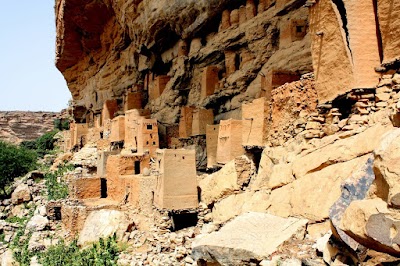Jenne-Jeno (Jenne-Jeno)
Overview
**Overview of Jenne-Jeno**
Nestled in the heart of the **Mopti Region** of Mali, **Jenne-Jeno** stands as a remarkable testament to the rich history and culture of West Africa. Considered one of the oldest urban settlements in sub-Saharan Africa, this UNESCO World Heritage site dates back to around 250 B.C. and flourished until the 15th century. As you explore Jenne-Jeno, you will be stepping into a world that was once a bustling hub of trade, craftsmanship, and cultural exchange, making it an essential stop for any traveler seeking to understand the region's past.
Jenne-Jeno is characterized by its impressive architecture, primarily composed of mud-brick structures, which exemplify the traditional building techniques of the region. The site features remnants of ancient homes, granaries, and even a mosque, showcasing the unique **Sudano-Sahelian style** prevalent in the area. Wander through the remains of the city and take in the stunning artistry that has withstood the test of time. The layout of the settlement reflects the social and economic organization of its inhabitants, with evidence of sophisticated urban planning that catered to a thriving community.
**Cultural Significance**
Visiting Jenne-Jeno is not only an archaeological journey but also an opportunity to engage with the living culture surrounding the site. The nearby town of **Djenné**, known for its stunning **Great Mosque**, is a vibrant hub of activity and learning. Here, you can witness the local **Bamana** culture, characterized by its rich oral traditions, music, and crafts. Be sure to shop for beautiful handmade pottery, textiles, and wood carvings that reflect the artistry of the local people.
The local community is incredibly welcoming, and interacting with the residents can provide valuable insights into the daily life and traditions that have persisted over centuries. You may even have the chance to partake in local festivals, which often feature traditional dance and music, allowing you to experience the vibrant culture of Mali firsthand.
**Visiting Tips**
When planning your trip to Jenne-Jeno, consider the best time to visit, which is typically during the dry season from October to April. This period offers milder temperatures and clearer skies, making it ideal for exploration. Travel to the Mopti Region can be facilitated through various means, including local transportation options such as bush taxis or guided tours, which can enhance your experience with knowledgeable insights.
As you prepare for your visit, remember to respect local customs and traditions. Dress modestly, and approach photography with sensitivity, particularly in rural areas where some may prefer not to be photographed. Engaging respectfully with the local community will enrich your experience and foster meaningful connections.
In conclusion, **Jenne-Jeno** is more than just an archaeological site; it is an invitation to explore the depths of Mali’s history and culture. Whether you are an avid history buff, a cultural enthusiast, or simply a curious traveler, this remarkable landmark offers a unique glimpse into the past and a chance to connect with the present. Embrace the adventure that awaits you in the heart of Mali, and create memories that will linger long after your journey ends.






